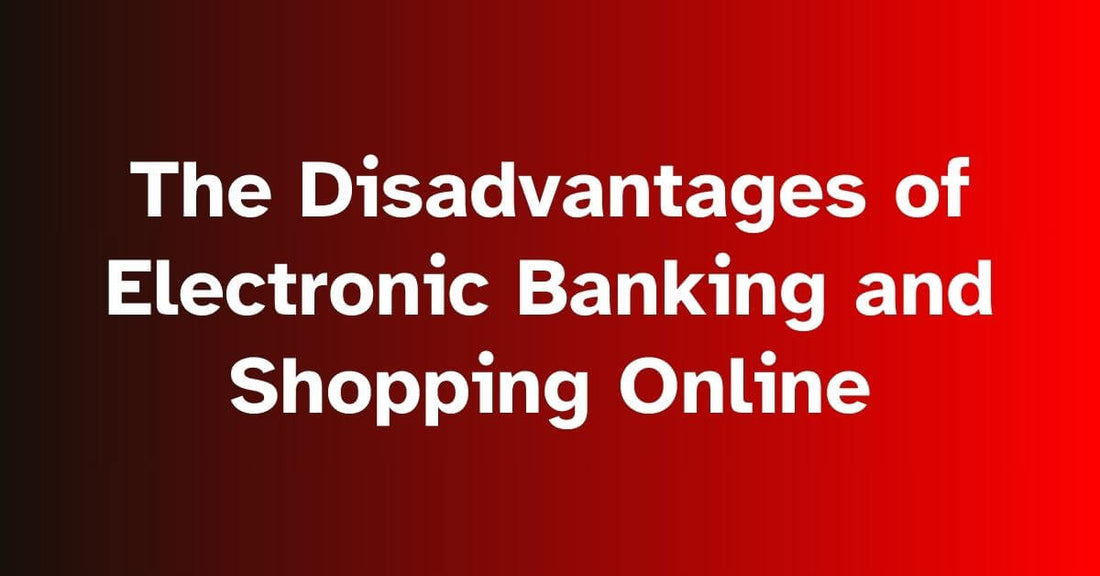Electronic banking and shopping online have revolutionized the way we manage finances and make purchases. While these platforms offer convenience and accessibility, it's essential to be aware of the potential drawbacks. In this article, we will explore 11 disadvantages of electronic banking and shopping online, ranging from security risks to the lack of tangibility.
The Disadvantages of Electronic Banking and Shopping Online
1. Security Risks: The Threat of Cybercrime
One of the major drawbacks is the increased risk of cybercrime. Hackers exploit vulnerabilities to steal sensitive information like credit card details. Examples include phishing scams and malware attacks. To safeguard against this, use strong passwords, secure websites, and keep antivirus software updated.
2. Identity Theft: A Growing Concern
Identity theft is a significant concern, where personal information is stolen for fraudulent activities. Protect yourself by monitoring statements, shredding documents, and avoiding sharing information on public Wi-Fi.
3. Lack of Personal Interaction: The Human Touch is Missing
Online transactions lack personal interaction, making it challenging for users to seek advice or resolve issues in real-time. Offering live chat support and detailed product information can help bridge this gap.
4. Technical Issues: System Failures and Downtime
Technical issues such as server crashes and network outages can disrupt access to accounts or prevent transactions. Companies should invest in reliable infrastructure and communicate clearly during downtime to manage customer expectations.
5. Hidden Fees and Charges: The Cost of Convenience
Hidden fees, such as transaction fees or shipping costs, may not be transparent. Carefully review terms and conditions before making online transactions to understand the full cost.
6. Limited Accessibility: Not Everyone Has Access to the Internet
The limited accessibility of electronic platforms can create a digital divide. Governments and organizations should work on improving internet infrastructure and affordability to bridge this gap.
7. Dependence on Technology: The Risk of Over-Reliance
Over-reliance on electronic platforms can make individuals vulnerable to disruptions. Having alternative methods for transactions, such as cash or backup cards, can reduce this risk.
8. Privacy Concerns: The Loss of Anonymity
Privacy concerns arise when personal information is collected and used without proper consent. Reading privacy policies, using secure websites, and regularly updating privacy settings can help protect against unauthorized access.
9. Scams and Fraud: The Dark Side of Online Transactions
Scams and fraud, including fake online retailers and phishing emails, pose a constant threat. Being cautious, making purchases from reputable retailers, and monitoring statements can help avoid falling victim to scams.
10. Limited Payment Options: Not All Merchants Accept Electronic Payments
Limited payment options can create barriers for individuals who rely on cash or alternative methods. Offering various payment options, including cash on delivery, can enhance inclusivity.
11. Lack of Tangibility: The Inability to Physically Inspect Products Before Purchase
The lack of tangibility in online shopping makes it challenging to assess product quality. Companies can address this by providing detailed product information, images, and flexible return policies.
In conclusion, while electronic banking and shopping online offer convenience, it's crucial to be aware of the potential disadvantages. By understanding and mitigating these drawbacks, individuals can make informed decisions and protect themselves when engaging in electronic transactions.
Related Articles:
-
Step-by-Step Guide: How to Activate Capitec Online Shopping Easily
- How to Verify Online Shopping on the FNB App in 4 Steps
- What Are the Payment Terms Commonly Used by Wholesalers in South Africa?
Explore more about online shopping:

